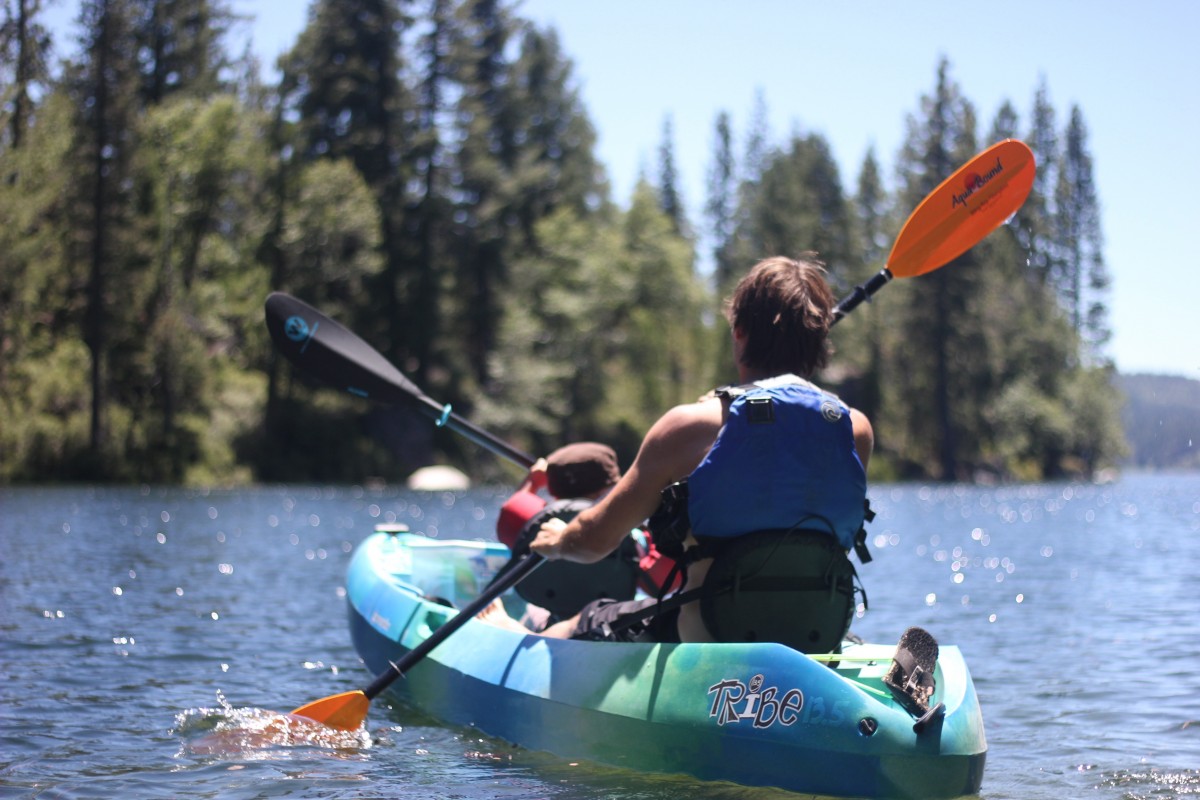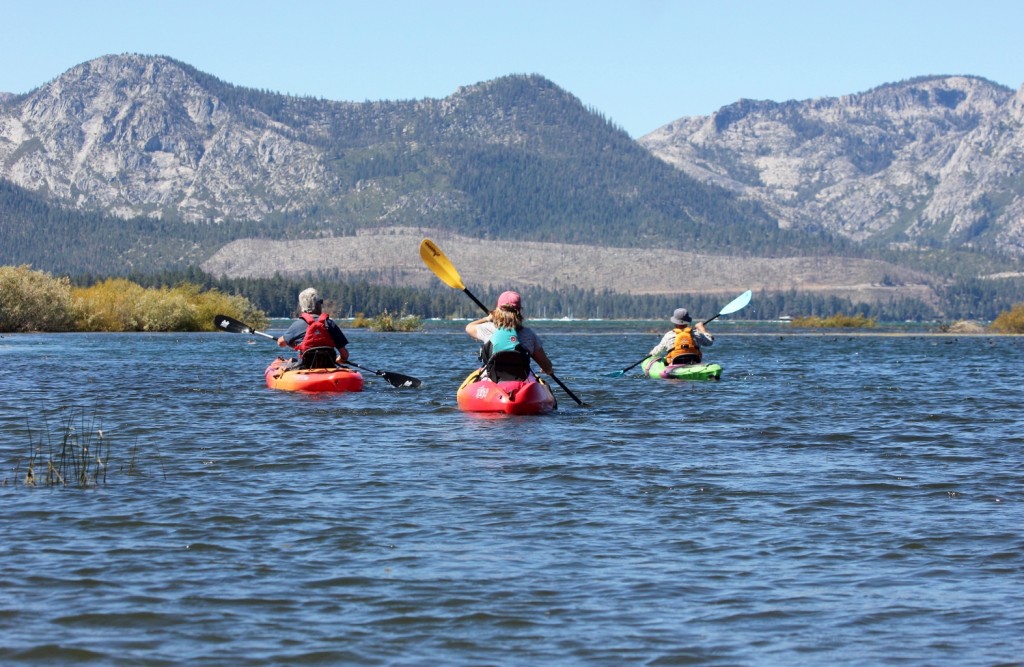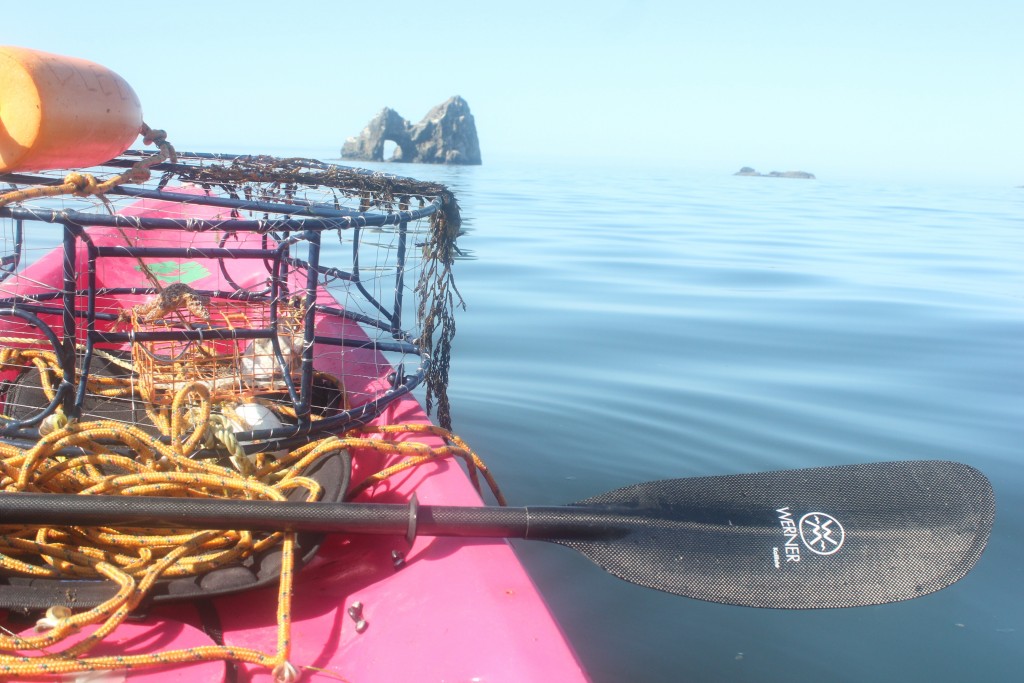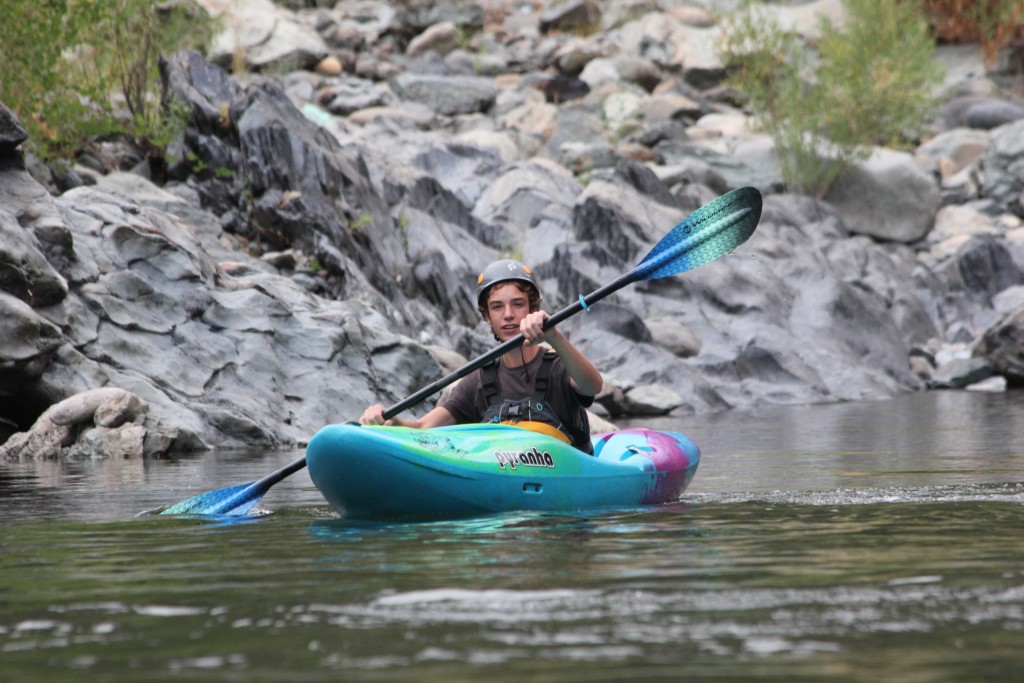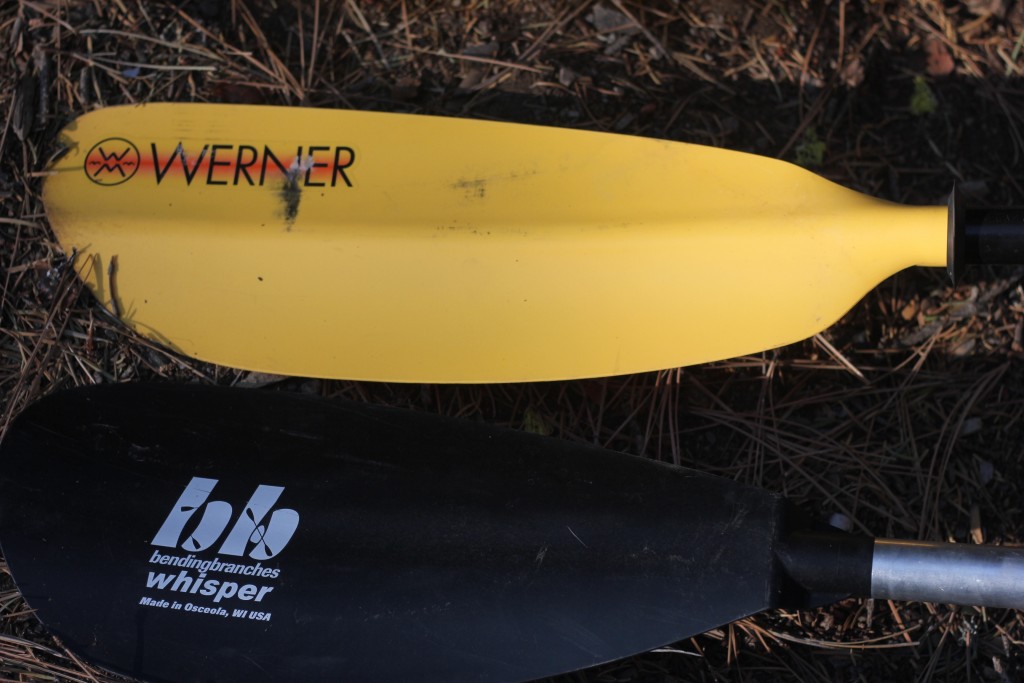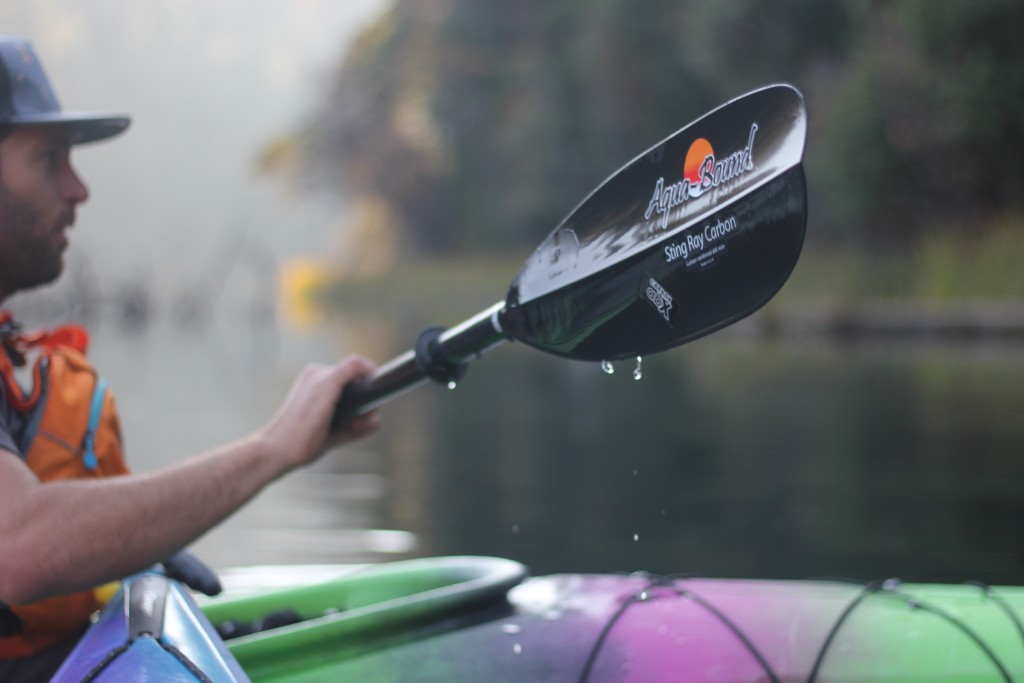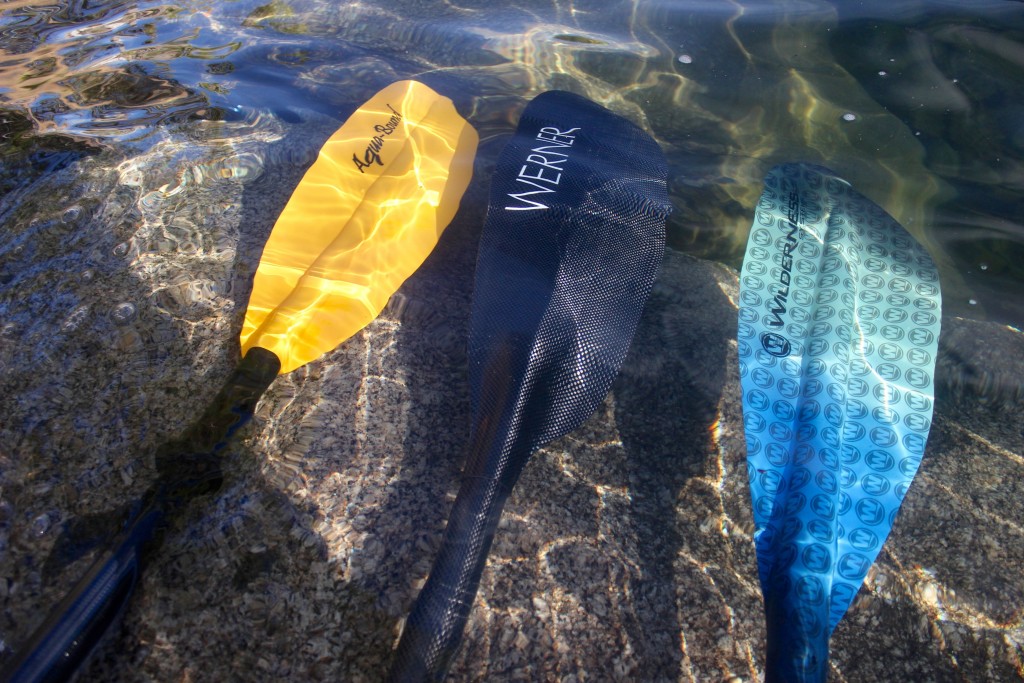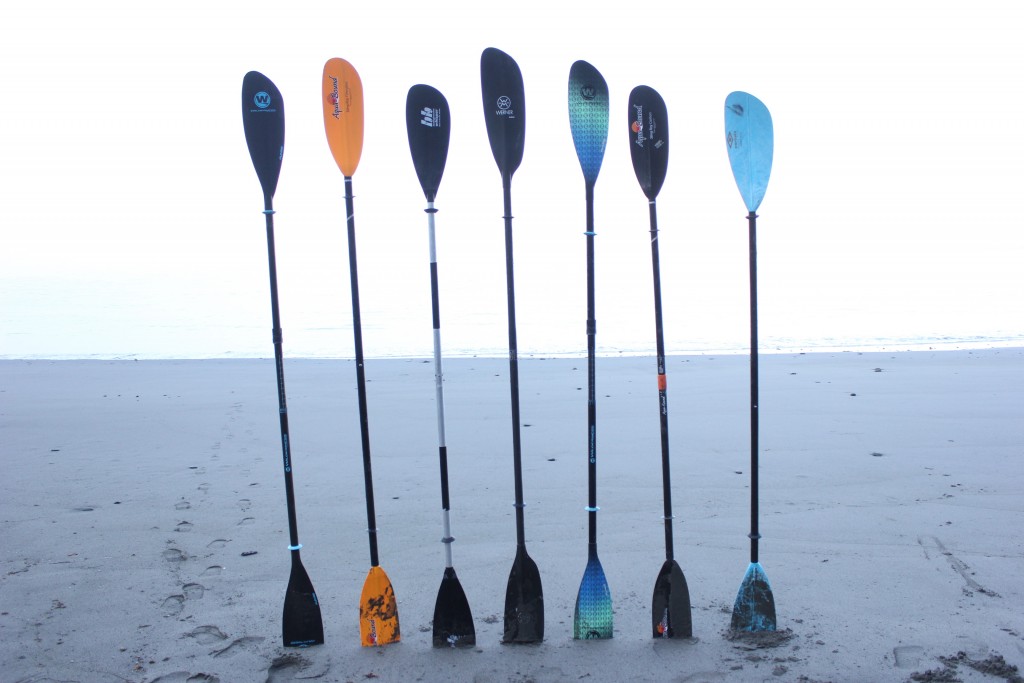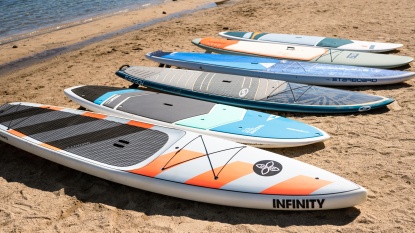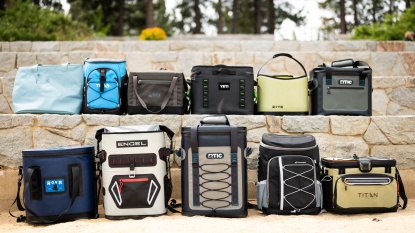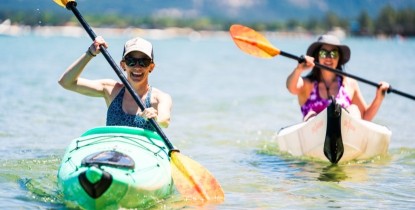Everyone knows you don't want to be up a creek without a paddle. The same rule applies if you are in a kayak on any body of water. Lake, river, ocean, or swimming pool, if you want to go kayaking, a paddle is an essential tool. There are many paddle options available depending on your budget, needs, paddling style, and the type of kayak you have. This article offers our advice based on years of experience and over three years of testing the top-rated and most popular recreational touring kayak paddles on the market. We cover all the things you need to consider to help you purchase the best paddle for your kayaking needs.
We will walk you through the following key elements to consider when shopping for a kayak paddle:
- The kayak you'll be using and its length and width. The kayak width and the paddler's height will determine how long your paddle should be.
- Blade materials: Different compositions are available. High-end options are light, stiff, and provide a more responsive stroke, but they are also more expensive.
- Blade shape, size, and feather: Your paddling style, preferences, and general physique will favor different blade sizes. Specific shapes such as the dihedral blade are designed to move through the water more effectively.
- Shaft materials: This affects the weight and overall performance of the paddle. Aluminum, fiberglass, and carbon fiber are the main options. Wooden paddles exist, but we did not consider them in this review.
- Shaft construction: The paddle can be a one-piece, two-piece, or four-piece, with different attachment systems available to join the shafts.
What type of kayaking?
Before you consider which paddle to purchase, it is essential to know what kind of kayak you will be using. We do not recommend buying a paddle before knowing this information.
There are various kayaking disciplines, including touring, white water, slalom, sea, surf, and marathon. Each discipline has a unique set of paddle designs to suit its needs. To the inexperienced eye, the paddles may look very similar. However, their subtle design features favor different styles of kayaking. A whitewater kayaking paddle is poorly suited for kayak touring, mainly because touring kayakers should use a much longer paddle than a whitewater kayaker — the narrower and shorter the boat, the shorter the paddle length needed. A touring paddle is also not necessarily designed to without the forces of white water.
If you want to paddle on flat water lakes and very gentle rivers (up to Class I), go with a touring kayak paddle. These are the paddles we examined in our kayak paddle review. For more information on the classification of river difficulty, refer to this American White Water resource.
Kayak fishing is a very popular way to enjoy time on the water. You will see kayak manufacturers include features that will specifically benefit passionate fishermen. These features include hooked blades to help you retrieve a line, measurement markers on the shaft so you can measure the length of your fish, and a plethora of camouflage-inspired prints, making them the perfect gift for the fisher(wo)man in your life. However, a regular touring kayak paddle will also do the job.
Length
To pick the correct length for your touring kayak paddle, you must know the width of the kayak and the height of the kayaker. This chart, based on numbers from Werner, is a helpful guide.
Many manufacturers, including Werner, Aqua-Bound, and Bending Branches, offer their kayak paddles in at least four different lengths. Not all manufacturers provide quite the same range of length options, but if you use this as a guide, you will be able to select the most appropriate one available to you.
If you are paddling a kayak shorter than nine feet, consider going for a shorter paddle, and if your kayak is longer than 12 feet, consider selecting a longer paddle.
Other factors can influence paddle length choice. If the paddler is athletic and relatively healthy, they may find that they enjoy a slightly longer paddle, which will enable them to make a more powerful stroke. Similarly, if a paddler has a disproportionately long torso, they may benefit from picking a paddle longer than the chart indicates.
High Angle Vs. Low Angle Paddle
Touring paddles are typically categorized into two principal groups: low angle paddles and high angle paddles. Some paddle companies are seeking to move away from this distinction, emphasizing the all-around suitability of their paddle designs.
If you want a relaxing day on the water or if you intend to cover a bit of distance, a low-angle paddle will best suit your needs. The low-angle paddling style favors a stroke where the paddler's wrists do not rise above their heads. This offers a gentler and less physically demanding forward paddle stroke that requires less torso rotation and provides less pulling power.
Low-angle paddles work better at a slower cadence than a high-angle paddle stroke. The low-angle stroke is less powerful and will, therefore, be used by paddlers who are okay with slower speeds. The benefit of this less powerful and slower stroke is increased endurance. If you are looking to cover long distances in your kayak or have limited mobility in your shoulders, this type of paddle will be more comfortable and effective for your needs.
A high angle paddle blade is designed to be used at an angle that is more perpendicular to the water's surface. The blade enters the water with the paddler's wrist above their shoulder. The blade shape is designed to catch the water efficiently and effectively at this angle, giving the paddler a powerful stroke.
A high-angle paddle style is suited to those wanting to move their kayak at faster speeds. For example, it is useful if you're going to race your kayak against friends, towards fish, or against yourself, as you use your kayak as a cardio training tool. The stroke requires the paddler to lift their arms higher with each stroke and requires more torso rotation and precision. The pay-off is a more aggressive, powerful stroke that will propel the paddler further and faster.
This review is based on the needs of recreational flatwater kayakers, so we focused our research on low-angle touring kayak paddles.
Blade Feather
The feathering of a paddle blade refers to the difference between the angles at which the paddle blades are set, otherwise known as the offset. The range can be anywhere from 0° to 60°. Most people prefer something in between; 30°-45 ° is common. Although windy conditions and paddling styles can influence this decision, for the most part, it comes down to individual preference. Once you get familiar with one angle, changing angles can feel a bit strange, but it can also provide some relief on your wrists, especially in windy conditions. We advise trying out paddles at a few different angles and seeing which angle feels best for you.
For this review, we selected two-piece paddles that offered the kayaker multiple options for the paddle blade angle.
The simple snap button used by Bending Branches, Carlisle, and SeaSense come in three options: left or right control (45°) and flat blades (0°). Novice to intermediate paddlers will find this sufficient. Advanced paddlers or those looking to perform the sport in particular environments may find they enjoy the variety of incremental adjustments that more advanced systems offer.
Werner and Aqua-Bound have ferrules that offer nine different feather angles, allowing right and left-handed paddlers to choose between O°, 15°, 30°, 45°, and 60° offset angles.
Wilderness System paddles offer a truly infinite range of paddle offsets, with clear demarcation so paddlers can easily select their desired feather angle.
Blade Size
Some paddle manufacturers offer the same paddle design with different blade sizes to suit individual styles of paddling. A larger blade offers a more powerful stroke, which some kayakers prefer. Those looking to have a more relaxed approach to kayaking, or even athletic paddlers looking to be gentle on their bodies, may choose a mid to smaller-sized blade shape.
Blade size also correlates with paddle weight. Narrower blades are often better for those who prefer to paddle long stretches, as they offer weight savings. Wider blades are suited for quick, powerful strokes and can help a paddler accelerate quickly. Fish fans who want to get somewhere fast, or those looking to accelerate onto a surf wave, may prefer this shape.
Blade Materials
One of the primary ways manufacturers alter the performance of a kayak paddle is by changing the blade material. The material also correlates with the weight and the cost of the paddle. Some manufacturers offer the same blade designs in a variety of different materials. For example, the Werner Skagit and Wilderness System Pungo are available in fiberglass or carbon fiber.
Carbon fiber — Top-end kayak models include carbon fiber in their construction, which provides a lighter paddle and means the blades are less likely to flex. The result is a more responsive stroke and a significantly more expensive price tag.
Fiberglass — Fiberglass blades are much lighter than plastic blends and a bit heavier than carbon fiber. They can be prone to chipping and deterioration if not treated with care. Not all fiberglass layups are created equal.
Plastic blends — Plastic blends are often favored by entry-level kayakers due to their durability and lower cost, but the extra weight is noticeable on longer journeys. Intermediate and advanced paddlers will also notice the flex that these blades produce, which results in a less effective and enjoyable stroke. Different blends are available, with manufacturers adding nylon and other composites in an attempt to reinforce the blades without adding too much extra weight.
Blade Shape
If you are looking for a well-designed blade shape, look for an asymmetrical dihedral shape. This asymmetrical shape is narrower and shorter on one side. As the paddler enters the blade into the water, the surface area exposed is uniform, delivering an effective stroke.
A dihedral blade has a slight rib down its center. This can be pronounced or smooth; some even take a cupped shape, allowing water to flow smoothly and evenly over both halves of the blade. This feature reduces flutter in the blade, which enables the paddler to take a smoother stroke.
Your paddling style (especially high angle or low angle) and general physique will favor different blade sizes and shapes.
Shaft Construction
One piece, Two pieces, or Four Pieces?
Kayakers must decide whether they want a one-piece paddle, two-piece paddle, or four-piece paddle. Not all kayak manufacturers offer all options, and different companies use different attachment systems to join the pieces. The classic snap-button ferrule is no longer the only option.
A four-piece paddle will pack down the smallest, and therefore it is a convenient option for flying or packing it out with an inflatable. However, most kayakers will find they can comfortably store a two-piece paddle on the back of their kayak or sit on top. The fewer joints the paddle has, the fewer places it is likely to break, and the less shake you will feel in the paddle. For this same reason, a one-piece is preferable to a two-piece in terms of performance.
However, a one-piece can be awkward to store in your car, especially if you have passengers. It is not convenient to store a one-piece paddle on your kayak, so this would not be suitable as an emergency spare. With the right roof rack and strapping system, kayak paddles can be stored on the outside of your car. Roof boxes are also a great place to keep your one-piece paddle safe.
To reduce the number of variables, we only tested two-piece paddles. Some are only available as two pieces, while others are available as one piece or four pieces.
Shaft Shape
A typical kayak shaft is circular, but some manufacturers make them slightly elliptical. This feature called 'indexing' allows kayakers to easily feel the angle at which they are holding their kayak paddle, enabling them to have better awareness and control over the blade's angle of entry into the water.
Bent shaft paddles have two kinks in the paddle shaft that act as grips. This allows the paddler to quickly feel whether they are holding the paddle incorrectly. More importantly, the bent shaft offers a more ergonomic grip, providing relief to kayakers with wrist problems. Those kayaking long distances or who use their kayak paddle extensively (e.g., a summer kayak camp counselor) may enjoy this feature.
Some manufacturers offer their kayak paddles with regularly sized shafts or small diameter shafts. Small shafts may have to be specifically ordered from the manufacturer. If the length between the top of your index finger and the base of your wrist is less than 6 inches, you should consider testing out this option. A small diameter shaft will also reduce the overall weight of the paddle, which may be preferable for some kayakers.
Shaft Materials
The material used in the construction of the shaft affects the weight and performance of the paddle.
- Aluminum — Aluminum has the benefit of being cheap. However, it is significantly heavier and easily radiates cold water or hot sun.
- Fiberglass — Fiberglass shafts increase the paddle's cost but create lighter and higher performance paddles.
- Carbon fiber — Carbon Fiber is currently the material of choice for the pros and is the lightest option for shaft construction. The rigidity of the carbon also provides a more responsive stroke.
Conclusion
There are hundreds of paddles out there. We hope this article guides you to the touring paddle that best suits your budget and use. When in doubt, beginner kayakers are generally better off starting with the highly-rated budget options in our comparative paddle review. Spending a little time on the water with a lower-cost option can help paddlers figure out their preferences and dial in their dream paddle purchase.

